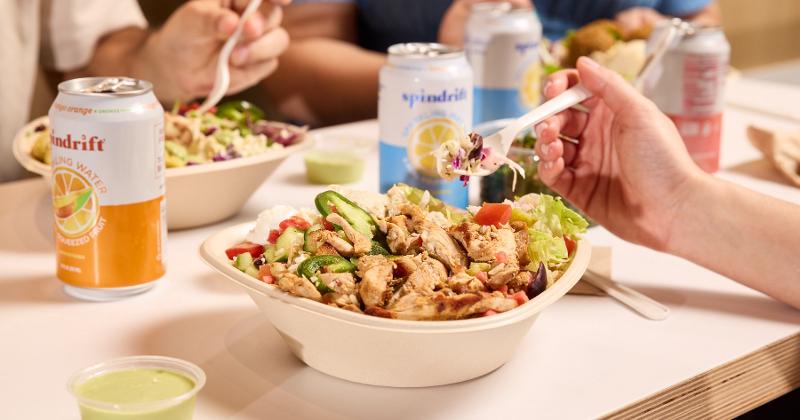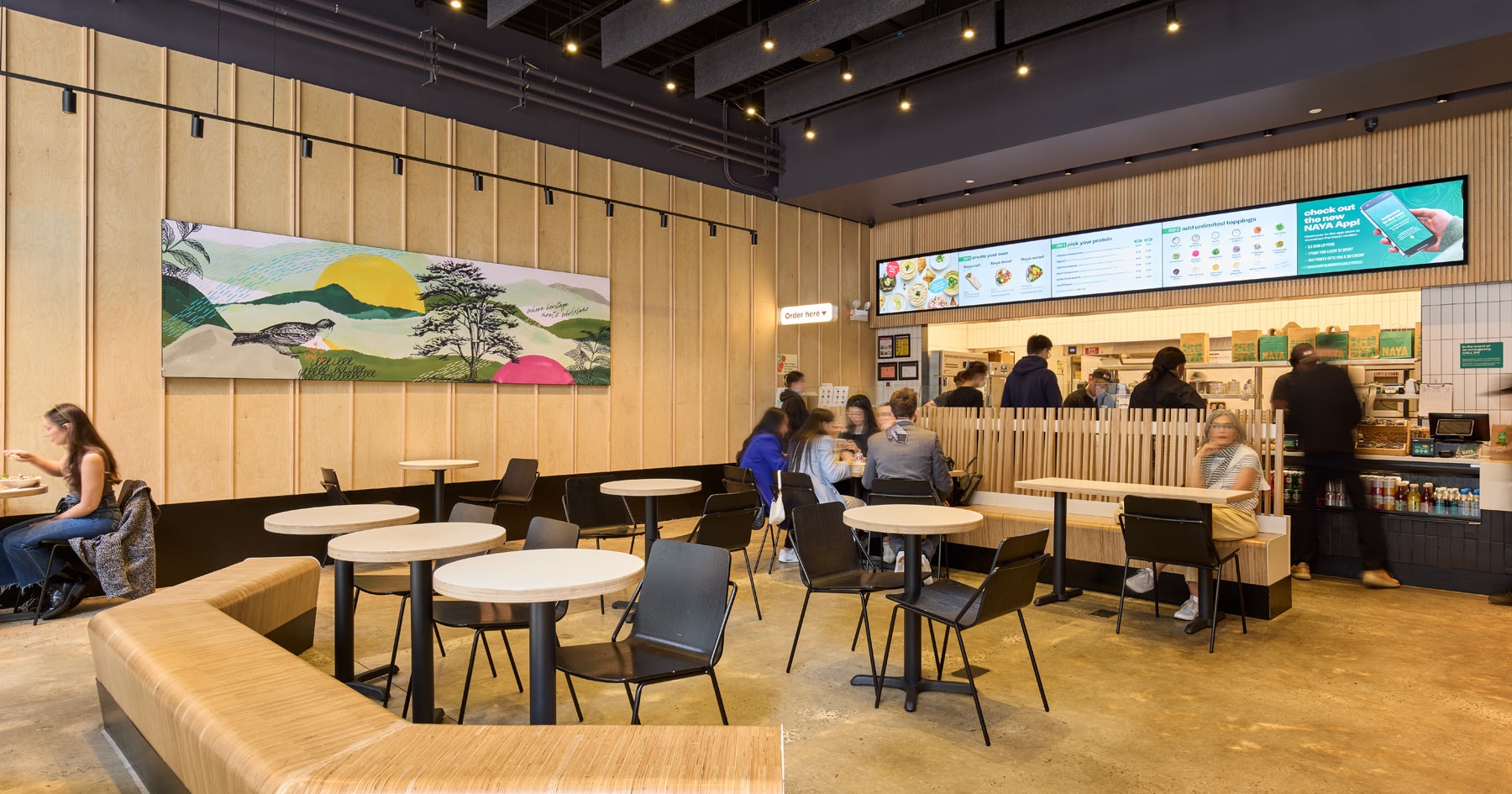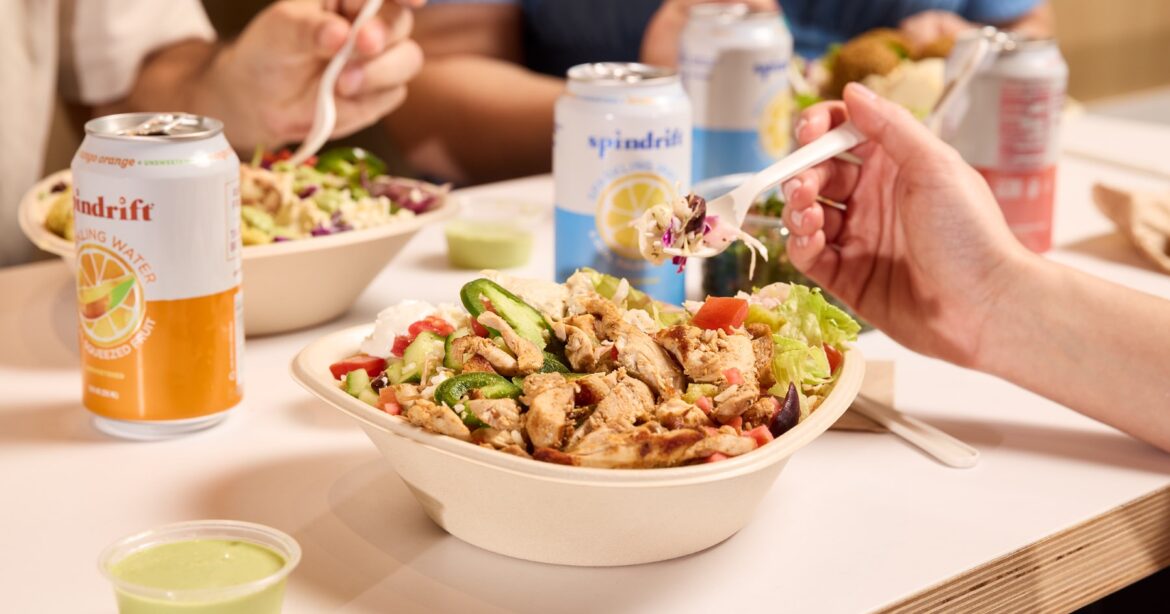
Naya is the Chipotle of Lebanese food. |Photo courtesy of Naya.

Americans love their hummus. But there’s a big difference between the styles of hummus from, say, Lebanon, compared with Israel, Greece or other parts of the vast Mediterranean region.
And Hady Kfoury is convinced that American diners are ready to embrace the unique variations within the category that is often lumped together as Mediterranean cuisine.
Kfoury is the founder and CEO of Naya, a 37-unit fast-casual concept with a Lebanese menu that recently announced a significant investment that sets the New York-based chain up for a new phase of growth.
TriSpan LLC in late July announced the close of a single-asset continuation vehicle, led by Pacific General Equity Partners and Kline Hill Partners. The deal included a reinvestment from TriSpan, which acquired Naya in 2020.
Now Naya is plotting to fill in the five states where the brand operates: New York, Connecticut, Pennsylvania, New Jersey and Massachusetts. Then Kfoury plans to look to new markets, including possibly Florida, Texas, Chicago and the Washington, D.C. area.

An interior of Naya in New York City. | Photo courtesy of Naya.
Naya is tiny compared with the more than 400-unit Cava, the Greek-inspired category leader in the Mediterranean space. Kfoury hopes to get to 200 units by 2030, and Cava has projected it will reach 1,000 by that point—both without franchising.
Naya isn’t the first to grow with a more regionally specific menu. Luna Grill is more Persian-inspired. Taim, now owned by Craveworthy Brands, was created by Israeli-American chef Einat Admony.
But Kfoury sees a big opportunity for the Lebanese flavors and unique ingredients that Naya offers. Units are averaging about $3 million in formats that can range in size from 600-square feet to about 3,000.
Naya is planning to open between 15 to 25 restaurants per year—all company-owned. Kfoury expects to end the year with 43 restaurants.
For Kfoury, it has been a journey that began in 2008. Originally from Lebanon, he trained as a chef in Switzerland and moved to New York to work with high-end chefs like Daniel Boulud and Francois Payard.
In 2008, Kfoury decided to open a full-service restaurant of his own, showcasing modern Lebanese food, which at the time was not well represented in New York.
“I made every mistake,” he said. “I ran out of cash after the first couple of months” and was in the red on opening day.
But then, about two weeks in, the New York Times wrote the restaurant.
“The next day, we were packed for lunch and dinner,” he said.
Though Kfoury’s background was in the full-service world, at the time he—like probably many other restaurant operators—was watching Chipotle’s success with the assembly-line counter service model with great interest.
So in 2010, he decided to reinvent Naya with a similar fast-casual format.
It worked. A second unit came four years later. Then Naya grew to six.
@hudsonyardsny Your favorite lunch spot is now open in Hudson Yards on level 4! Enjoy fresh Middle-Eastern inspired favorites in vibrant bowls, salads and wraps. #naya#hudsonyards#nycfood#nyclunch#nyclife♬ There She Goes – CYRIL & MOONLGHT & The La’s
“But at that point I realized there was something great going on, but I can’t be growing by myself,” Kfoury said.
So he began talking to TriSpan in late 2019 with the goal of a strategic investment. But then COVID-19 hit.
TriSpan pulled out of the deal at first. But then, a few months later, they reconsidered, though with different terms, and TriSpan took a majority stake in 2020.
It saved the company from bankruptcy, said Kfoury. “If I had no support during the pandemic, I would not have survived.”
Now, however, the brand is thriving. Kfoury, however, is not interested in franchising.
“If you’re able to grow as company-owned, and you’re trying to look for tier-one markets that you can afford owning, why hand it over to someone who could ruin the brand at some point?” he said.
He might consider franchising overseas, however, he noted.
Kfoury said the company has been approached by Alshaya, the multi-brand franchise operator that has brought many American brands to the Middle East. But he said the prospect of international growth is too distracting at this point. “It’s not a priority.”
In the U.S., the brand also is positioned for value. The most popular offering is chicken shawarma for $12.99, and toppings are unlimited.
At Naya, for example, toppings include hummus, baba ghanouj and cucumber yogurt. But there are also more unique offerings, like diced Lebanese pickles, toum (garlic whip), labne and pomegranate dressing.
Naya also has dishes like kibbe (crispy beef-and-pine-nut dumplings), fatayer (a mini pie with spinach, lemon and sumac) and rekakat (three cheese wrapped in phyllo and deef-fried).
Naya’s menu also lends itself well to catering, which represents about 11% of sales.
Cava has opened doors for the type of cuisine, but now Kfoury said guests can differentiate between the Greek-inspired flavors at Chipotle and Naya’s Lebanese ingredients, many of which are imported.
“It’s a different flavor profile at the end of the day,” he said. “I feel there’s room for everyone.”
Lisa Jennings is a veteran restaurant industry reporter and editor who covers the fast-casual sector, independent restaurants and emerging chain concepts.
View All Articles by This Author


Dining and Cooking